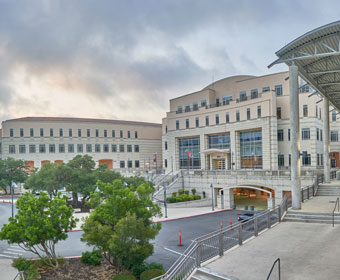New executive leadership structure

Updated July 9, 2019
Dear Roadrunners,
Amid re-conceptualizing our External Relations and Student Affairs areas over the last several weeks, I’ve also had the opportunity to consider the most effective organization for UTSA’s administration. Today I’m writing to share a new executive leadership structure that provides a clear process for campus administrative planning, prioritization and decision making, and reflects our core as an academic enterprise.
This new administrative structure articulates the role of the Provost and Senior Vice President for Academic Affairs as the individual primarily responsible for overall institutional tactics and internal operations driving us to our strategic vision and destinations as a university. Under this new structure, the Provost oversees our efforts toward achieving all the elements of our strategic plan.
This allows me, as president, to turn more of my attention outward. My ability to focus additional time and energy on stakeholder advocacy, external partnership building and fundraising—particularly in light of UTSA’s upcoming capital campaign—is essential for our advancement.
Beginning this summer, my senior leadership team will transition into three distinct administrative bodies with defined roles and areas of oversight:
- President’s Cabinet
The President’s Cabinet will consist of all Vice Presidents, my Chief of Staff, the Senior Vice Provost for Student Affairs & Dean of Students, and communications leads from University Relations. This group will advise me on timely institutional matters involving external stakeholders or impacting the university’s reputation, brand or relationships. Cabinet members will have the responsibility of communicating information and decisions back to their constituencies. - University Leadership Council
Led by Provost and Senior Vice President for Academic Affairs Kimberly Andrews Espy, the Provost’s Leadership Council will guide the administrative prioritization, planning and execution of institutional initiatives. Their charge also includes reviewing campus administrative policies and procedures, as well as assessing campus needs and resources. Members of the Provost’s Leadership Council include all academic college Deans, all Senior Vice Provosts and Vice Presidents overseeing campus functional areas, as well as leaders from our shared governance bodies: the chairs of the Faculty Senate and Staff Council, and President of the Student Government Association. - Academic Council
The Academic Council will consist of all Deans, all Senior Vice Provosts, all Vice Provosts and the Vice President for Research, Economic Development and Knowledge Enterprise. Under Dr. Espy’s leadership, this group will provide institutional guidance regarding all academic programs, support and services. Their purview includes initial review of new degree proposals as well as academic policies, procedures and programs. They will also prioritize and make recommendations regarding strategic investments for academic units.
Integral to this new structure is a clear decision-making process that delineates how new administrative programs, priorities and initiatives advance with designated points of input, as illustrated below:
This leadership structure works in tandem with the governance integrated into each of our strategic initiatives through task forces, committees and steering groups. These groups, with representation from faculty, staff, students and occasional external stakeholders, ensure that all initiatives benefit from broad campus community participation and input.
These changes will position us to go the next step in bringing our strategic planning process to the unit level. Next year we will focus on creating a framework for every college and administrative unit on campus to develop their strategic plan—aligned and connected to the university’s strategic vision— using selected key performance indicators to assess ongoing progress.
This administrative leadership framework mirrors what one typically sees at large, public research institutions as they rise toward new levels of excellence and national recognition. We have phenomenal leaders at UTSA, and I have a full appreciation for just how hard they work and the wherewithal it takes to lead in our fast moving, complex environment. This approach will not only position them to do their jobs well, but also help UTSA to be a more nimble and effective organization for the benefit of our students.
With appreciation,
Taylor
